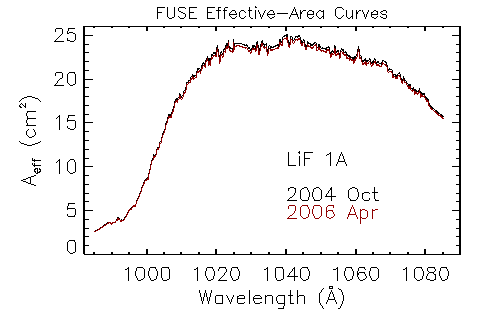

Mission Status Report #96 Star Date: May 18, 2006
FUSE Continues "Stellar" Performance!
Caption: The FUSE satellite is seen superimposed on an optical image of the nearby galaxy known as the Large Magellanic Cloud, a satellite galaxy of the Milky Way. At a distance of only 170,000 light years, the Large Magellanic Cloud is of intense in this galaxy have been observed to date, with many other stars still awaiting their turn in the FUSE limelight. (Graphic courtesy NASA and Lauren Fowler, the JHU FUSE project.)
FUSE has continued operating very well in the one-reaction-wheel control mode since my last report. This it is great news to those of us who have worked so hard over the last year to bring FUSE back into science operations after the loss of the third out of four reaction wheels that normally control the satellite pointing. Pointing is now maintained by a combination of a single reaction wheel, and magnetic torquer bars (basically electromagnets) that are used to push and pull against the earth's magnetic field. Carefully planned pointing sequences are now used to manage the varying speed of the wheel to keep it well within the limits of its operation. The system is working so well that in April 2006, over 700 ks of science data were gathered, and the monthly observing efficiency of almost 32% matches the mission average prior to December 2004!
More good news comes from the calibration front. We recently obtained a quality observation of a flux calibration star that has permitted us to make an assessment of any changes in sensitivity since the last reference point in the CalFUSE processing pipeline (September 2004). The new observation shows a very small change in the LiF channels over the last 1.5 years (consistent with no change!), a modest 5% change in the SiC2 channel, and a 15% decrease in the SiC1 channel over this time. The SiC1 channel decrease is consistent with the changes seen earlier in the mission, but the other channels are expieriencing a slower decline than had been seen earlier in the mission. This bodes very well for continued science production across the entire FUSE bandpass.

Caption: A comparison of the FUSE "effective area" (sensitivity) between two observations of the same star taken in October 2004 and April 2006. Only relatively small changes have occurred.
With all of this success, we are not sitting back and basking in it. We continue to press the envelope of performance with this new operating system. In particular, there is some important scientific "discovery space" for FUSE if we can increase the number of long observations we can perform (say, greater than 100,000 seconds or so). This will allow higher quality data on some existing FUSE targets, and also permit newly identified (but faint) targets from the Galex survey or other sources to be pursued with FUSE. A single target was observed for 150,000 s in April, demonstrating this capability and providing a proof of concept. We will continue to work on ways of opening up new capability with the one-wheel system.
I offer continued thanks to all of the FUSE Sciences Operations team, including our partners on the Mission Operations Team from Honeywell Technology Solutions, Inc., and our colleagues at Orbital Sciences Corporation, as well as the JHU operations staff, for their ongoing efforts as we continue to improve FUSE operations.
Reported by: Bill Blair, FUSE Chief of Observatory Operations
 Last Update: May 18, 2006
Last Update: May 18, 2006